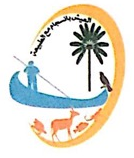Events Calendar
| Mo | Tu | We | Th | Fr | Sa | Su |
|---|---|---|---|---|---|---|
| 1 | 2 | 3 | 4 | 5 | 6 | 7 |
| 8 | 9 | 10 | 11 | 12 | 13 | 14 |
| 15 | 16 | 17 | 18 | 19 | 20 | 21 |
| 22 | 23 | 24 | 25 | 26 | 27 | 28 |
| 29 | 30 |
 Communication Strategy
Communication Strategy
| Download |
|
|---|---|
| View | Open in browser |
| Upload date | 05 May 2016 |
| Contributor | Deena |
| Geographical coverage | Iraq, |
| Keywords | communication, plan, nbsap, stakeholder, mainstream, biodiversity, |
| Release date | 08/05/2016 |
| # | File name | Contributor | Upload date | Size | Content type |
|---|---|---|---|---|---|
| 1 | communication.strategy.pdf (current) | Deena | 05 May 2016 | 1 MB |
|
This document has been prepared with the support of Global Environment Facility and United Nations Environment Programme, under the enabling activity project “First National Biodiversity Strategy and Action Plan (NBSAP) for Iraq and Development of Fifth National Report to the CBD”. NBSAP is a principle instrument for implementing the Convention on Biological Diversity at the national level. The Communication Strategy is the supporting system for NBSAP implementation and it is one of the related reports to the NBSAP document.
To ensure that the Iraqi biodiversitty strategy is mainstreamed into the planning and activities of all sectors whose activities can have an impact (positive and negative) on biodiversity and to manage sustainably and conserve the biodiversity resources in line with the global targets. One of the key elements for a successful NBSAP implementation is a Communication Strategy, to be also in line with the Communication, Education and Public Awareness programme of CBD.
This Communication Strategy has been developed to support the implementation of the NBSAP by providing a framework to guide the development and delivery of communication activities. Its key strategic goal is mainstreaming biodiversity, and to strengthen understanding of its linkage to human well-being, social and economic welfare and sustainable development. This entails disseminating information and creating tools to more effectively engage stakeholders. It covers the 2015-2020 project period, with specific activities identified for the first two years (2015 – 2016) and it should be modified and updated at regular intervals throughout the implementation.
